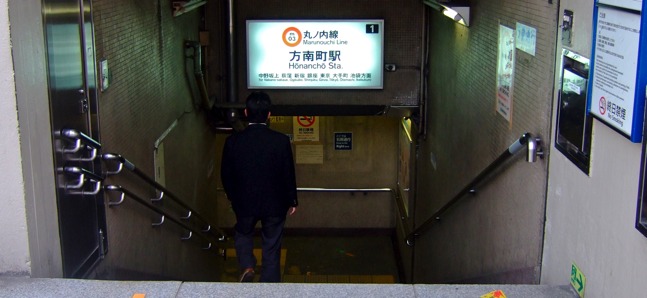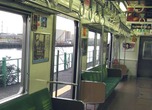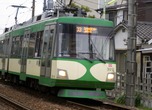Escape on the branch lines #2
The Marunouchi Line’s little brother, the Honancho-shisen

Posted: Tue Mar 30 2010
Within the web of Tokyo’s train lines, each one has its distinctive personality, some stronger than others. In this series Time Out Tokyo takes a look at the rails less travelled: the branch lines of Tokyo’s train systems. In Part I we looked at the Tobu Kameido Line, a line with a removed atmosphere despite its relative proximity to the rest of the city. In Part II we’ll be exploring Tokyo’s subway and the Honancho-shisen.
The total length of Tokyo’s subway system, which opened its first line in 1927, including both the Tokyo Metro system and the Toei Oedo system, is approximately 300km long – which, after the systems in London and New York, makes it the third largest in the world. The Tokyo Metro Marunouchi line is second oldest line in the subway system (the first is the Ginza Line), and the first line to have been constructed after the Second World War. It runs for about 24km in total, connects Ikebukuro to Ogikubo, and passes through major stations such as Otemachi and Shinjuku. In Shinjuku, it's a crowded subway line with the highest frequency of trains; however, the further west you travel on the line, the more relaxed it gets.
The second station after Shinjuku on the Tokyo Metro Marunouchi line, Nakano-sakaue station, is the starting point for our second branch line, which is referred to as the Honancho-shisen line. Just 3.2km in length, the Honancho-shisen line stops at just four stations, takes only 7 minutes from start to finish and operates 3-car trains during the daytime. Sandwiched between main line platforms bound for Ogikubo and Ikebukuro, the Honancho-shisen branch line train departs from Nakano-sakaue and arrives at its first stop, Nakano-shinbashi station, in about 3 minutes. There’s no way of knowing, because at this point the line is still underground, but just before Nakano-shinbashi station, the line crosses the path of the Kandagawa river. Also in the area, above ground, is the Takanohana-beya (Takanohana sumo stable) – made famous by its head coach Koji Takanohana. It’s hard to tell because you can’t see anything but darkness from the train windows, but from the screeching sound of the wheels on the rails, you might be able to feel the train suddenly change direction from southwards to westwards soon after departing Nakano-shinbashi. Approximately 600 metres further the line reaches Nakano-fujimicho station – which is home to the Tokyo Metro train depot. The line was originally built to give the Marunouchi line trains access to the depot. Marunouchi trains are silver with a red stripe; however, occasionally there is also opportunity to spot a Ginza train, distinguishable by its orange stripe, coming in for repairs or inspection. As a side note, train buffs may like to note that the point where Marunouchi and Ginza trains intersect is at Akasaka-mitsuke station. Two minutes after Nakano-fujimicho the line reaches Honancho station, being located directly underneath Route 318, when viewed on the map, looks as if it’s blocking the traffic. The stairways down to the station are narrow and looking for the entrances, which blend in with the houses and the street, can easily become a bit of a treasure hunt.
Related articles:
・Escape on the branch lines #1
Tobu Kameido Line’s small town feel with downtown buzz
・The Olympic feeling – on a train
Forget the sights, focus on the sounds
・Enjoy the sound of Tokyo trains
Forget the sights, focus on the sounds
Tweets
- About Us |
- Work for Time Out |
- Send us info |
- Advertising |
- Mobile edition |
- Terms & Conditions |
- Privacy policy |
- Contact Us
Copyright © 2014 Time Out Tokyo












Add your comment